Choosing the right wood for outdoor furniture is key to making it last and look great for years.
The right type of wood can stand up to rain, sunlight, and temperature changes while keeping its strength and natural beauty.
Each wood has its own qualities; some are rich in color, others are strong and resistant to decay or insects.
The focus here is on understanding which woods perform best in different climates and how to keep them in good condition.
All the options shared are trusted and tested for outdoor use, chosen for their lasting durability, easy care, and natural weather resistance.
What Makes Wood Good Outdoors?
When selecting wood for outdoor furniture, the right material should combine strength, resistance to weather, and long-term value.
A good outdoor wood handles moisture, sun, and changing temperatures without warping or rotting.
It benefits from natural oils or dense fibers that help protect against insects and decay. Stability is important too, as quality wood should resist shrinking or cracking with humidity changes.
Sustainability also matters since responsibly harvested wood supports environmental balance.
Finally, climate plays a big role in performance, humid or coastal regions need woods that can resist dampness, while drier areas require materials that won’t split under intense heat.
Local hardwoods often perform best in their native conditions.
Top Woods That Stand the Elements
The best woods combine beauty, strength, and weather resistance, offering lasting comfort and timeless appeal for any outdoor living space.
1. Teak

Teak stands as the premium choice for outdoor furniture, prized for its natural oils that provide exceptional weather resistance.
This tropical hardwood develops a beautiful silver patina over time while maintaining structural integrity.
- Naturally resistant to rot, decay, and insect damage without requiring chemical treatments or frequent maintenance
- Thrives in all climates from tropical to temperate, making it ideal for coastal areas and poolside settings
- Significantly higher cost compared to other outdoor wood options, making it a substantial investment
2. Ipe (Brazilian Walnut)
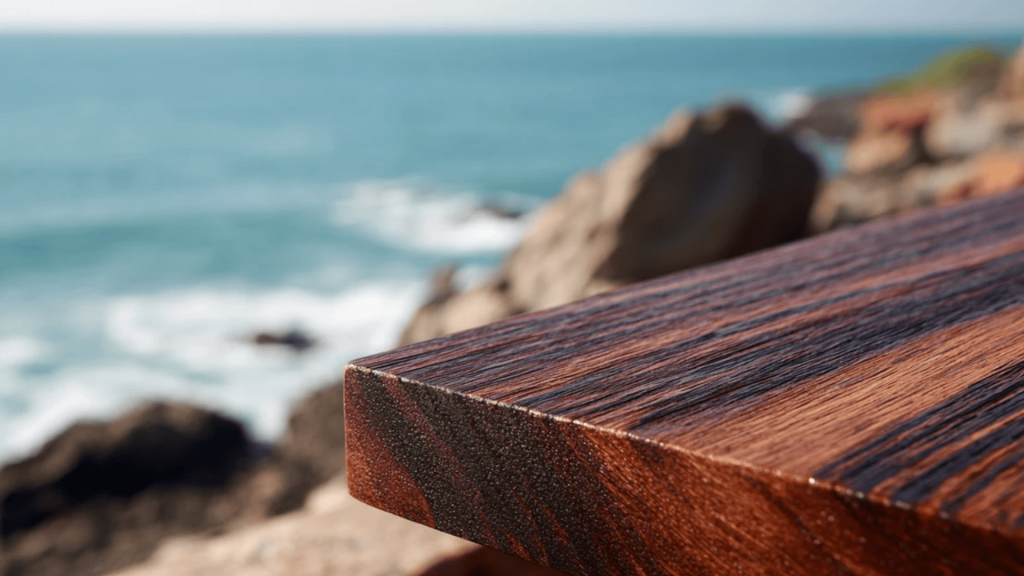
Ipe delivers unmatched density and strength among outdoor woods, creating furniture that withstands extreme weather conditions.
This Brazilian hardwood resists water penetration, mold growth, and insect infestation through its tight grain structure.
- Extraordinarily durable with a lifespan of 40–75 years, outlasting most other outdoor wood species
- Perfect for humid and coastal climates where moisture and salt air challenge other materials
- Extremely dense composition requires pre-drilling for all fasteners, complicating construction and increasing labor time
3. Acacia

Acacia offers attractive grain patterns and solid durability at a fraction of teak’s cost.
This hardwood provides good weather resistance while delivering a visual appeal that complements various outdoor design styles.
- Affordable pricing makes quality hardwood furniture accessible without compromising on aesthetic appeal
- Beautiful natural grain patterns suit both modern and traditional outdoor decor styles
- Requires regular sealing every 6–12 months to prevent drying, cracking, and premature weathering in variable climates
4. Cedar
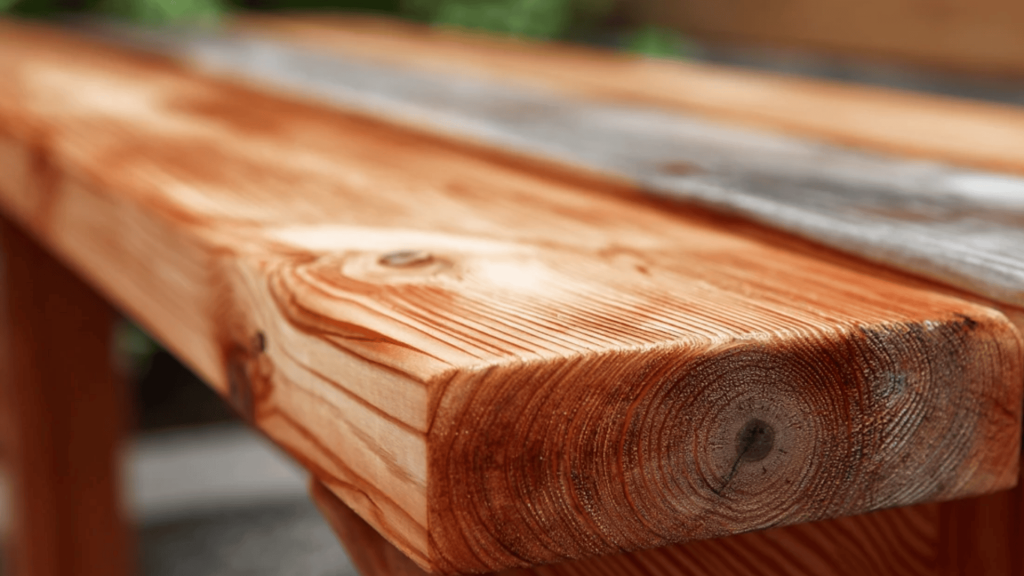
Cedar combines lightweight construction with natural pest resistance, making it easy to move and maintain.
This aromatic softwood contains oils that repel insects while aging gracefully to a distinguished silver-gray patina.
- Lightweight nature simplifies furniture relocation and handling during seasonal storage or rearrangement
- Natural oils provide built-in insect resistance with minimal maintenance, requiring only occasional cleaning
- Best suited for moderate climates; extreme weather conditions accelerate wear and reduce its 15–20 year lifespan
5. Redwood

Redwood showcases stunning reddish-brown tones and natural resistance to moisture and pests.
Sustainably harvested from West Coast forests, this softwood offers both environmental responsibility and lasting outdoor performance.
- Naturally resistant to moisture damage and insect infestation through inherent chemical properties
- Rich color and grain patterns complement rustic and craftsman-style outdoor spaces beautifully
- Requires periodic staining every 2–3 years to preserve original color and prevent fading to gray
6. Cypress
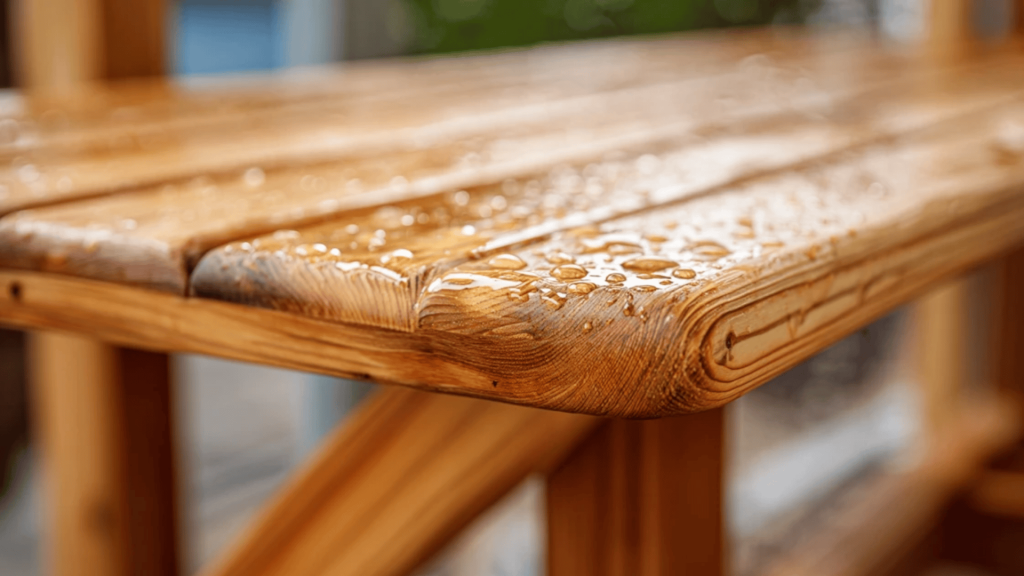
Cypress contains cypressene, a natural preservative oil that provides exceptional water resistance.
This southern softwood thrives in wet conditions, making it ideal for regions with high rainfall or humidity levels.
- Superior water resistance through natural oils makes it perfect for rainy, humid, and coastal climates
- Lighter color accepts paint and stain readily, allowing easy customization to match design preferences
- Softer texture compared to hardwoods makes it more vulnerable to denting and surface damage from heavy use
7. Black Locust

Black locust delivers exceptional hardness and rot resistance while supporting environmental sustainability.
This domestic hardwood serves as an eco-friendly alternative to imported tropical species without sacrificing performance or durability.
- Extremely hard and dense composition provides superior rot resistance with minimal maintenance requirements
- Rustic appearance suits farmhouse, cottage, and natural outdoor design styles perfectly
- Limited availability and higher cost than common softwoods due to slower growth rates and regional sourcing
8. Douglas Fir

Douglas fir provides excellent structural strength for outdoor furniture frames and support pieces.
This versatile softwood works well for construction projects when properly protected with sealants or exterior-grade finishes.
- High strength-to-weight ratio makes it ideal for pergolas, frames, and structural garden furniture
- Works well for DIY projects in dry climates where moisture exposure remains limited
- Requires frequent sealing every 1–2 years to prevent moisture damage and maintain weather resistance
9. White Oak
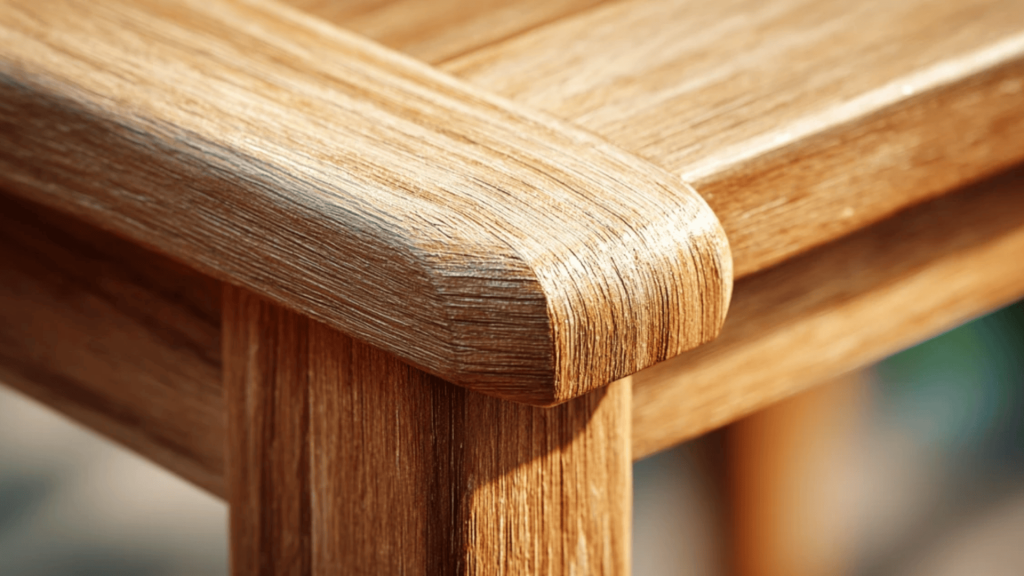
White oak features a tight, closed-grain structure that naturally resists water penetration.
This durable hardwood brings shipbuilding-grade strength to outdoor furniture, creating pieces that withstand years of exposure.
- Closed-grain structure provides superior water resistance, performing well in moderate to humid climates
- Traditional appearance suits classic, colonial, and timeless outdoor furniture styles beautifully
- Requires regular sealing every 1–2 years to prevent natural graying and maintain original color appearance
10. Eucalyptus

Eucalyptus grows rapidly in sustainable plantations, offering environmental benefits alongside outdoor durability.
This hardwood contains natural protective oils and delivers teak-like aesthetics at a more accessible price point.
- Fast-growing and sustainably harvested, making it an environmentally responsible furniture choice
- Teak-like appearance suits contemporary and transitional outdoor spaces with warm, inviting aesthetics
- Needs seasonal oiling every 3–6 months to prevent cracking and maintain moisture content, especially in dry climates
Quick Comparison Table
| Wood Type | Durability | Maintenance | Weather Resistance | Ideal Climate | Cost Tier |
|---|---|---|---|---|---|
| Teak | ★★★★★ | Low | Excellent | All climates | $$$$ |
| Ipe | ★★★★★ | Low | Excellent | Humid/Coastal | $$$$ |
| Acacia | ★★★★☆ | Medium | Good | Dry/Moderate | $$ |
| Cedar | ★★★★☆ | Medium | Good | Mild/Humid | $$ |
| Redwood | ★★★★☆ | Medium | Good | Moderate | $$ |
| Cypress | ★★★★☆ | Medium | Excellent | Wet/Coastal | $$ |
| Black Locust | ★★★★★ | Low | Excellent | Humid | $$$ |
| Douglas-fir | ★★★☆☆ | High | Fair | Dry | $ |
| White Oak | ★★★★☆ | High | Good | Dry/Cold | $$$ |
| Eucalyptus | ★★★★☆ | Medium | Good | Mild/Dry | $$ |
How to Protect Wood Patio Furniture
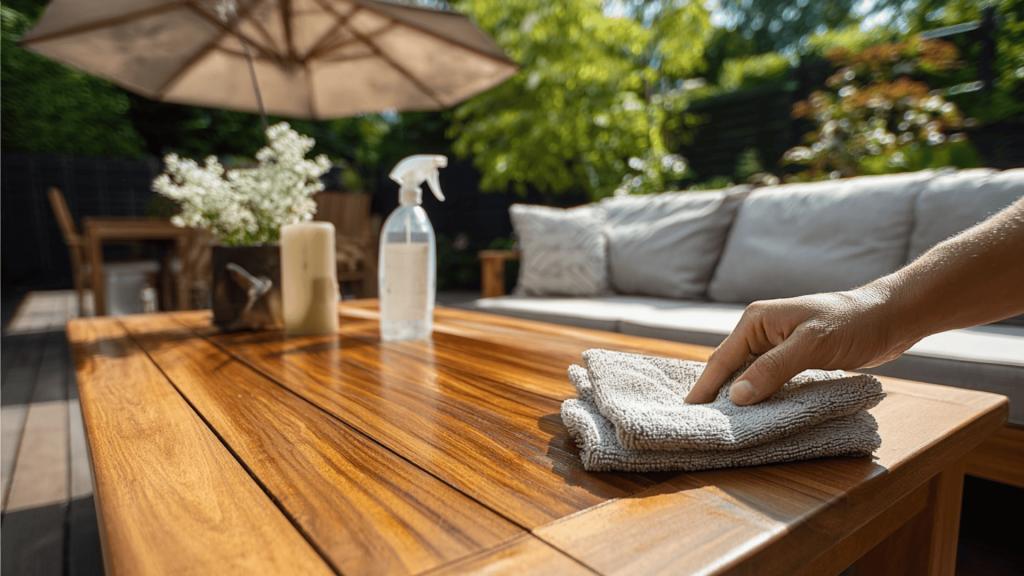
Proper protection keeps outdoor furniture strong, beautiful, and weather-resistant through every season, extending its life and charm.
- Apply Sealants or Oils: Use teak oil or spar varnish to protect wood from sunlight, rain, and cracking.
- Regular Cleaning: Wash gently with mild soap and water, then dry completely to prevent mold and mildew buildup.
- Use Furniture Covers or Storage: Keep furniture covered or stored during bad weather to stop moisture and sun damage.
- Shield from Direct Sunlight: Place furniture under shade or umbrellas to reduce fading, cracking, and color loss outdoors.
- Treat Metal or Hardware: Use stainless steel or brass fasteners to prevent rust formation and protect the wood surface.
With steady care and attention, wooden patio furniture remains durable, polished, and inviting for outdoor use year after year.
Outdoor Wood Furniture Maintenance Tips
Regular maintenance keeps outdoor furniture strong, clean, and beautiful, helping it last longer through changing weather and seasons.
- Seasonal Maintenance Schedule: Clean and oil in spring, inspect in summer, reseal in fall, and store during winter.
- Handling Aging and Patina: Woods like teak and cedar gray naturally; clean or oil to restore their original tone.
- Preventing Mold and Mildew: Keep furniture dry and ventilated; use a diluted vinegar solution if mold or mildew appears.
- Refinishing Older Furniture: Lightly sand and apply oil; replace damaged slats with matching wood for a smooth finish.
With consistent care and attention, outdoor wooden furniture stays sturdy, stylish, and weather-ready for many years of use.
Final Thoughts
Creating a welcoming outdoor space starts with thoughtful choices that reflect comfort, purpose, and style.
Wood brings warmth and character that no synthetic material can match, turning any patio or garden into a natural retreat.
When cared for with attention and patience, it becomes more than furniture; it becomes part of your home’s story.
Focus on quality, intention, and harmony with the environment, and your outdoor pieces will reward you with timeless appeal.
Ready to design your perfect outdoor setting? Choose the right wood that supports sustainability, and craft a space that inspires every gathering and quiet moment.
Frequently Asked Questions
What Finish Works Best for Outdoor Wood?
Use UV-resistant sealants or penetrating oils that protect wood without forming thick, peeling layers.
Can I Paint My Outdoor Wooden Furniture?
Yes, but use exterior-grade paint and primer to resist fading, peeling, and moisture damage.
How Do I Keep Insects Away from Wooden Furniture?
Choose naturally resistant woods and apply insect-repelling oils like teak or citrus-based treatments yearly.
Is Pressure Washing Safe for Wooden Furniture?
No, use mild soap and water instead, since high pressure can strip the finish and damage fibers.

